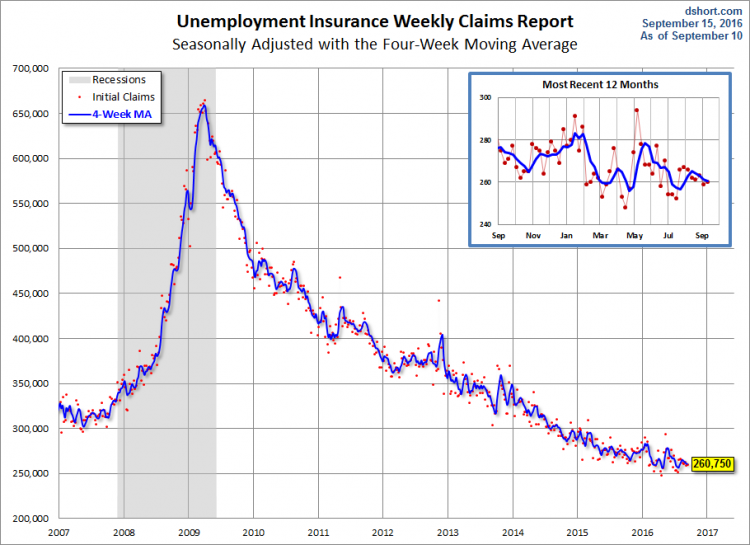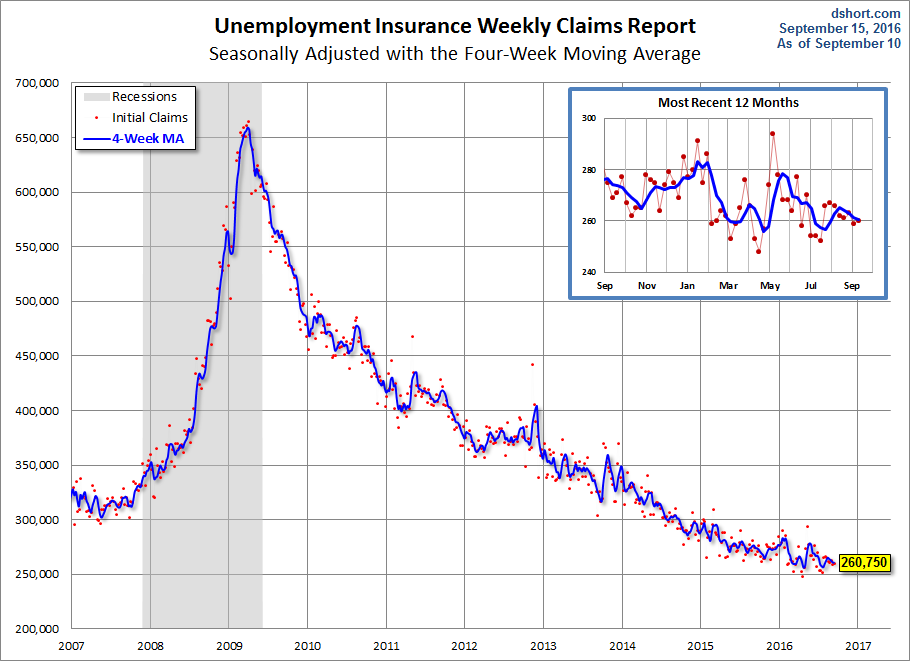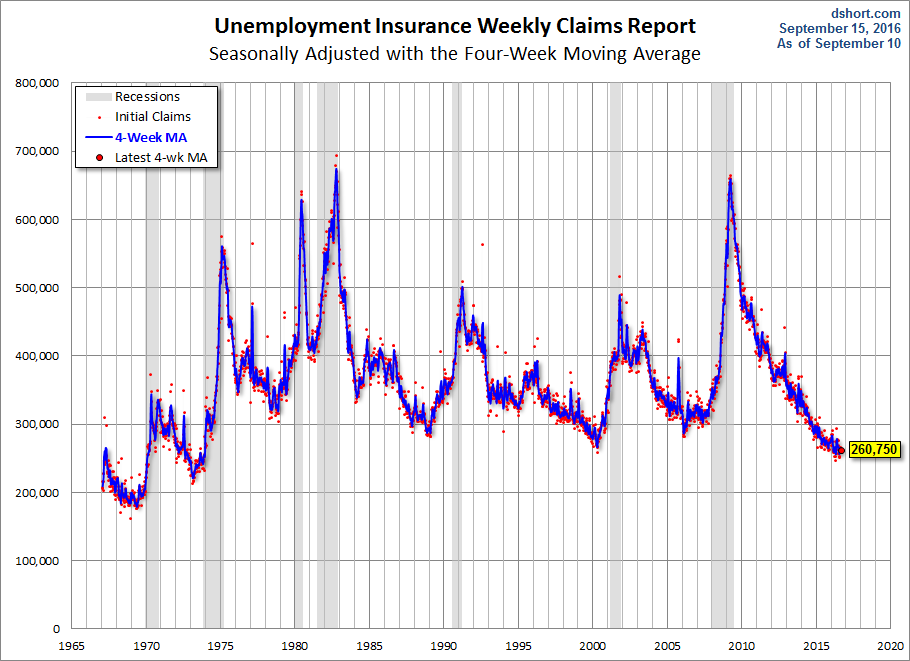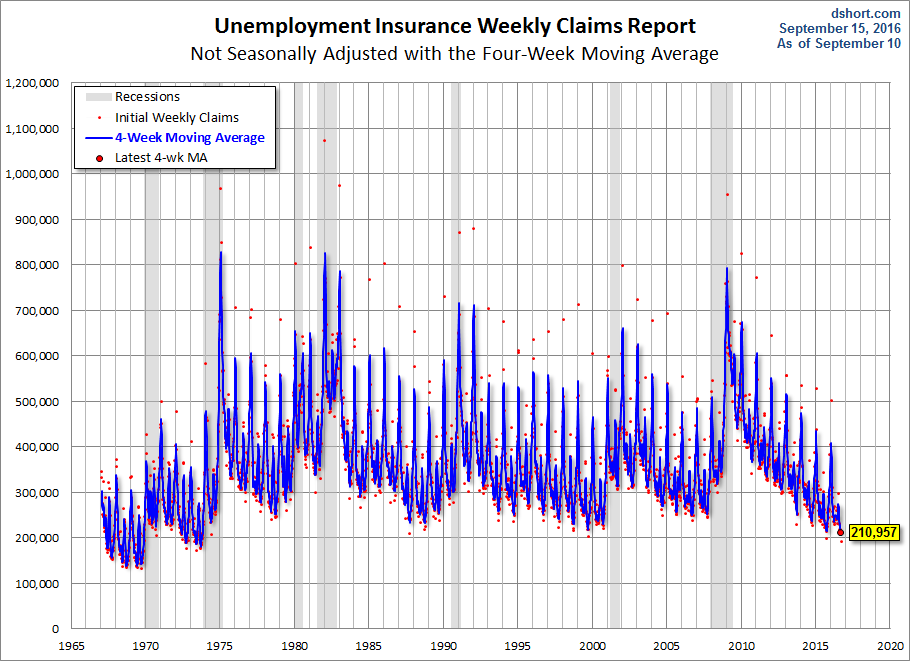
Written by Jill Mislinski
Here is the opening statement from the Department of Labor:
In the week ending September 10, the advance figure for seasonally adjusted initial claims was 260,000, an increase of 1,000 from the previous week’s unrevised level of 259,000. The 4-week moving average was 260,750, a decrease of 500 from the previous week’s unrevised average of 261,250.
There were no special factors impacting this week’s initial claims. This marks 80 consecutive weeks of initial claims below 300,000, the longest streak since 1970. [See full report]
Today’s seasonally adjusted 260K new claims, up 1K from last week’s number, was below the Investing.com forecast of 265K.
The BLS calls attention to the 79-month streak below 300K. However, the latest weekly number is 12,000 above its interim low set 21 weeks ago on April 16th. The four-week moving average is at 260,750, which is 4,750 above the post-recession low set on April 23rd.
Here is a close look at the data over the past few years (with a callout for the past year), which gives a clearer sense of the overall trend in relation to the last recession and the volatility in recent months.

As we can see, there’s a good bit of volatility in this indicator, which is why the 4-week moving average (the highlighted number) is a more useful number than the weekly data. Here is the complete data series. This is the 80th consecutive week under 300K, the longest streak since 1970.

The headline Unemployment Insurance data is seasonally adjusted. What does the non-seasonally adjusted data look like? See the chart below, which clearly shows extreme volatility of the non-adjusted data (the red dots). The 4-week MA gives an indication of the recurring pattern of seasonal change (note, for example, those regular January spikes).

Because of the extreme volatility of the non-adjusted weekly data, we can add a 52-week moving average to give a better sense of the secular trends. The chart below also has a linear regression through the data. We can see that this metric continues to fall below the long-term trend stretching back to 1968.
















